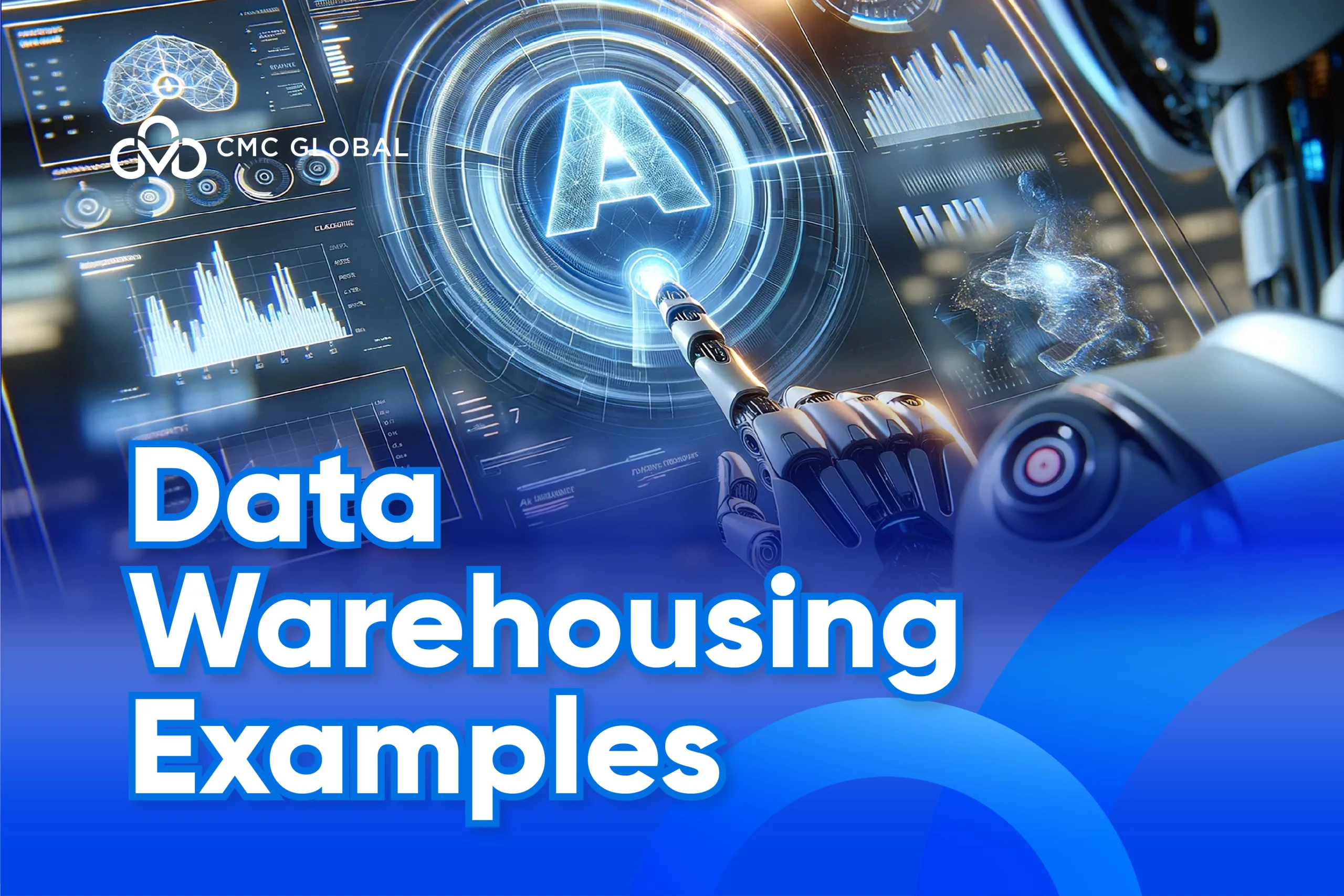What Is Data Warehousing Modernization?
Data warehousing modernization involves overhauling and expanding your existing infrastructure to leverage the advantages of cutting-edge technologies. This process includes adopting contemporary data storage, processing, and analytics solutions, frequently incorporating cloud-based platforms to enhance scalability, flexibility, and overall efficiency.
Furthermore, it includes tasks such as migrating and restructuring data, enhancing query efficiency, reinforcing data governance, and ensuring compliance. All of these efforts are aimed at enabling organizations to leverage the capabilities of big data, real-time analytics, and advanced business intelligence, empowering them to make more informed decisions.
Data Warehousing Modernization Strategies
What’s the approach for modernizing a data warehouse? Is it a complete overhaul, starting from scratch, or building upon the existing infrastructure? Well, you have options. You can choose to go either way. Here are three highly efficient methods for modernizing a data warehouse
#1 Cloud Data Warehousing

The 1st strategy involves transferring your existing on-site legacy systems to a cloud-based data warehouse. This approach offers several advantages:
- The pay-as-you-go model of cloud computing significantly lowers costs, as you only pay for the storage and computing resources you actually use.
- No maintenance or support expenses associated with managing the infrastructure.
- 3. Enhanced scalability is achievable with cloud-based data warehouses, allowing you to adjust resources as needed when data volumes grow.
- Integrating with other cloud services and applications becomes simpler and faster.
Considering these advantages, we recommend this approach for businesses seeking to mitigate the high expenses and complexities of maintaining on-premises infrastructure. Indeed, a majority of data warehouses are now either partially or fully migrated to the cloud, as indicated by recent statistics.
Read more: Data Warehousing: Concept, Key Features and How It Works
#2 Data Warehouse Automation

Data Warehouse Automation (DWA) is crucial for driving and streamlining efforts to modernize data warehouses. DWA tools streamline numerous labor-intensive and repetitive tasks in data warehousing, including ETL processes, code creation, and schema design. This automation expedites the creation and implementation of data warehouses.
A significant aspect of data warehouse automation revolves around addressing shifting business demands and data origins. DWA facilitates agile development methodologies, simplifying the iterative process of refining data warehouse structures and accommodating evolving requirements.
#3 Extend Your Existing Data Warehouse
At times, businesses may opt to retain their on-premises and legacy systems due to compliance and security concerns. However, this doesn’t preclude them from embracing the benefits of modernization. In such cases, extending the existing data warehouse emerges as the best approach for modernizing the data ecosystem.
Through this method, legacy sources are integrated with contemporary tools and cloud platforms to enhance the scalability and flexibility of the data warehouse. While some legacy components remain unchanged, others undergo modernization, and new functionality is incorporated into this foundation using modern integration and automation tools.
The benefits of this approach include:
- On-demand addition of processing power and storage capacity through a modern cloud platform, enhancing scalability and reducing costs associated with hardware upgrades.
- Facilitates a controlled environment for experimenting with modern platforms and the cloud, leveraging the existing data warehouse infrastructure.
#4 Start a new project
This approach entails leveraging contemporary tools, platforms, and methodologies to initiate a new data warehouse project. For instance, when initiating an analytics project for a business unit, it presents an opportune moment to embark on this endeavor with modernization in mind.
In contrast to initiating an analytics project using legacy systems, the benefits of this method include:
- Facilitation of agile and adaptable development efforts, as modern tools and cloud platforms enable rapid experimentation, testing, and evolution of ideas without substantial investments or protracted development periods.
- Enhanced support for Data Warehouse (DW) automation tools and solutions, such as Astera DW Builder, which streamline the scaling and expansion of analytics initiatives with minimal effort.
How to Implement Data Warehousing Modernization

Modernizing a data warehouse is a multifaceted and crucial task that demands careful consideration to ensure a smooth transition. Below are key factors to keep in mind:
-
Evaluate your current status
Identify all data sources and determine which data is pertinent for migration. Selectively choose data required for analysis rather than transferring all data indiscriminately.
-
Select appropriate technology
Align the choice of technology or platform for your data warehouse with your business objectives. Options like Google BigQuery, Amazon Redshift, or Snowflake offer varied data warehousing architectures suited to different needs. For instance, Snowflake facilitates easy scalability with separate components for storage and computing, while other platforms might require additional data storage solutions like Amazon S3.
-
Data integration
Develop a strategy to integrate data from diverse sources. Utilize data integration tools with pre-built connectors to simplify data extraction from these sources.
-
Construct modern ETL pipelines.
Move beyond traditional manual ETL pipelines prone to errors and incapable of handling large data volumes. Employ fault-resistant and automated modern ETL pipelines, possibly through zero-code ETL tools like Astera Centerprise. These pipelines offer built-in data quality checks, validation mechanisms, and scheduling capabilities for managing and automating workflows efficiently.
-
Ensure data quality
The success of the project hinges on migrating quality data to the data warehouse. Establish a robust data governance framework, assign data stewards, define data validation rules, enforce business rules during ETL processes, implement data lineage, traceability features, data transformations, and handle null values and inaccuracies.
-
Start data modeling
Choose a data model tailored to your business requirements, such as star schema for optimizing query performance or Snowflake schema for managing complex relationships in data.
-
Implement cost management
Cloud data warehouses operate on a pay-as-you-go model, but costs can escalate rapidly. Optimize computing and storage resources based on actual needs, avoid over-provisioning, implement data archiving and retention policies, utilize cloud-based data tiering, and leverage cold storage options to reduce costs for less frequently accessed data.
Data Warehouse Modernization: What Comes Next?

Transitioning to a cloud data warehouse is just the beginning; ensuring the ongoing maintenance and care of your new infrastructure is equally important. Here’s what to focus on next:
- Monitor query execution times within the data warehouse.
- Identify and troubleshoot slow-running queries to pinpoint the root cause of delays.
- Establish error and exception handling mechanisms to track and manage issues like query failures and performance bottlenecks.
- Deploy caching mechanisms to store frequently accessed query results, alleviating the workload on the data warehouse for commonly requested data.
- Employ data partitioning strategies for large tables to enhance query performance by minimizing the data scanned.
- Regularly assess data archiving and tiering approaches to ensure efficient storage and accessibility of historical data.
- Enforce adherence to data retention policies by archiving or deleting obsolete data and implementing data purging strategies.
A strategic Partner for Data Warehouse Modernization
Modernizing a data warehouse is a pivotal step for businesses aiming to enhance their data infrastructure, improve agility, and drive innovation. Partnering with a trusted and experienced provider like CMC Global can streamline this process and maximize the benefits of modernization.
Contact us for further details!




